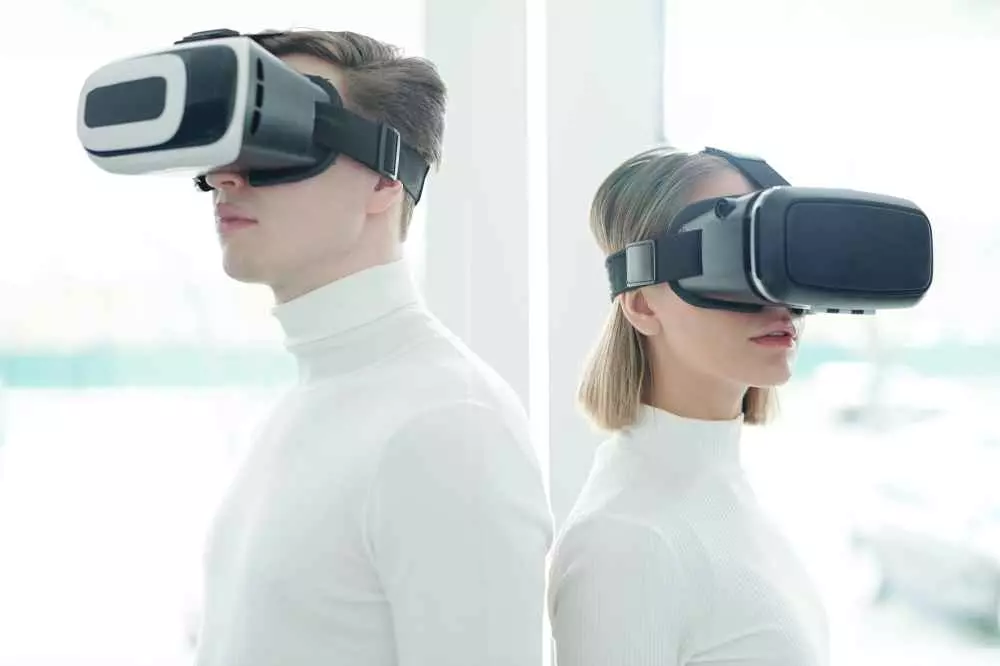Application of VR and AR in teaching anatomy
Nowadays, technology plays a key role in the educational process, with virtual reality (VR) and augmented reality (AR) becoming increasingly popular in various fields, including medicine. The teaching of anatomy, already based for years on traditional methods such as textbooks or reality statements on anatomical models, is now gaining a new dimension thanks to technological innovations. In this article, we will look at how VR and AR are revolutionizing the teaching of anatomy and what benefits this brings to students and teachers.
Virtual reality as an educational tool
Virtual reality provides unique opportunities for direct immersion in a virtual world, which is particularly relevant in the context of teaching anatomy. With VR, students can explore three-dimensional models of the human body, enabling them to better understand the location of organs and their functions. Unlike traditional textbooks, where images are often flat, the VR experience allows for total immersion in 3D.
The technology allows for an interactive approach to learning. Students can explore the human body on their own, get up close to individual organs, and use various tools to perform medical simulations. Such an experience makes learning more engaging and effective.
Augmented reality in teaching
Known for the game Pokémon GO, augmented reality (AR) is becoming increasingly important in education, including teaching anatomy. AR allows virtual elements to be superimposed on the real world, enabling students to interact with physical anatomical models in a whole new way. Using tablets or smartphones, students can see 3D images of organs that come to life on the screen.
AR makes complex anatomical structures easier to understand, allowing students to visualize how different organs interact with each other. By being able to manipulate the models and change their size and viewing angle, learning becomes more intuitive. Students can also benefit from additional information, such as the functions of individual organs and their role in the body.
Benefits for students and faculty
VR and AR technologies offer many benefits for both students and teachers. First of all, students have the opportunity to learn in a more immersive and interactive way, which increases their engagement. Learning becomes more fun and therefore less stressful. Moreover, through medical simulations in VR, students can experience real-life situations, which gives them valuable practical skills.
For lecturers, the use of VR and AR means that educational materials can be better tailored to a variety of learning styles. With differentiated teaching methodologies, teachers can focus on the individual needs of students, making teaching more effective. In addition, by using advanced technologies, lecturers can conduct more dynamic and interesting classes, which attracts students' attention.
Examples of using VR and AR in practice
Many medical universities around the world already have innovative curricula that use VR and AR. For example, students can take advantage of software distributions that offer anatomical databases that enable interactive 3D sessions. For example, programs such as oVirt and Visible Body offer access to rich visual resources that facilitate learning anatomy in a modern way.
With AR, students can use applications that allow them to identify individual organs by scanning anatomical models. In this way, learning becomes more than just reading from books - it becomes an interactive experience that engages all the senses.
Challenges and the future of VR and AR in education
While VR and AR offer many benefits, there are also some challenges to implementing them in education. The high cost of hardware and software can be a barrier for some institutions. In addition, teachers must be properly trained to effectively implement these technologies in their work التعليمية.
However, over time, we can expect the cost of technology to come down and the availability of tools to increase. As VR and AR become more widespread, their use in education will grow, offering new opportunities and changing the landscape of anatomy teaching.
Summary
Virtual and augmented reality have the potential to revolutionize the teaching of anatomy, offering new opportunities for students and teachers to interact and engage. These technologies make learning more immersive, interactive and effective, benefiting all participants in the educational process. The future of medical education is sure to gain in value, and VR and AR can play a key role in this.
